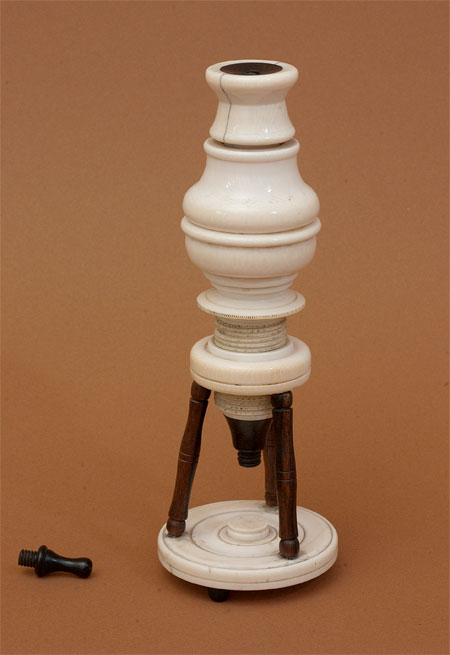Results of Golub Collection search: Microscope No. 253
Ivory Tripod Microscope No. 253
Made: c1660
Made by: Unknown
Made in: probably Italy
This is a compound microscope on a tripod base. The body is a single piece of ivory that is externally threaded on the objective end and internally threaded on the eyepiece end. Fixed to the lower end of the body is a dark wood nosepiece (possibly Lignum vitae) into which an objective lens is mounted. The obverse side of the lens is convex. The eyelens is mounted at the base of the (presumably) threaded ivory eyepiece, and a dark wood insert is mounted the top of the eyepiece. A threaded peg can be screwed into a hole in this piece to act as a dust cover. CT scanning revealed only two biconvex lenses: an eyelens and objective lens. This microscope does not have a field lens, thus it is likely that it was made before 1660. Monconys invented the field lens in 1660, and Campani started adding it to his instruments c1661.
Illumination of the sample is by reflected light only; there is no provision for transmitted light. Focusing is accomplished by turning the microscope body. The base is a circular piece of turned ivory, 6cm x 6mm, with an ivory peg in the center. The peg acts as the sample stage. The microscope mounting ring is supported above the base by three turned wood pillars. The base sits on three small wooden legs, the placement of which alternates with the pillars. Imaging is poor due to low contrast and lens aberrations. The microscope is 23cm tall.
There are no known instruments similar to this one, however, its design is similar to microscopes from Eustachio Divini of mid-17th Century Italy.
Featured 12/2010; 09/2018

